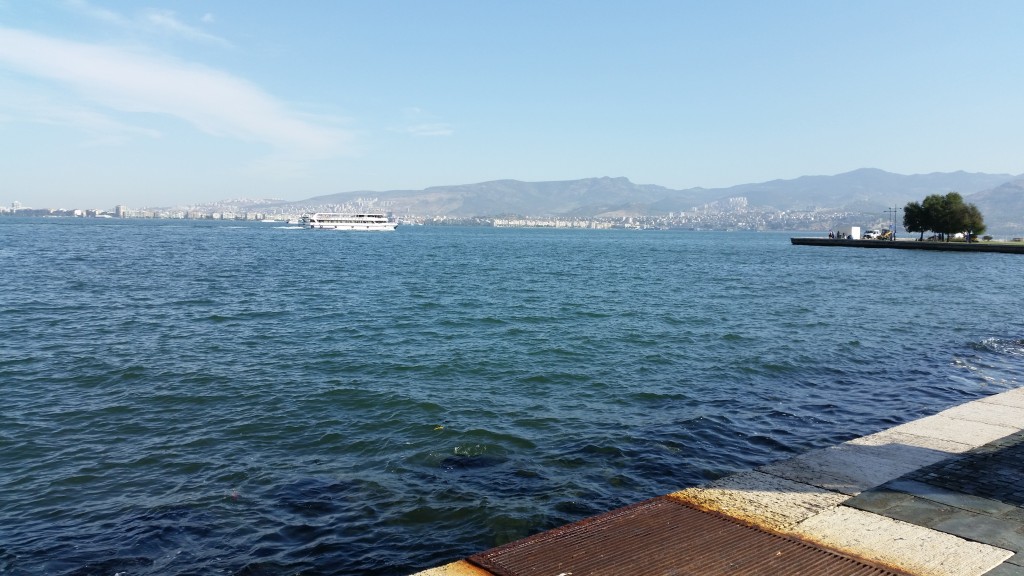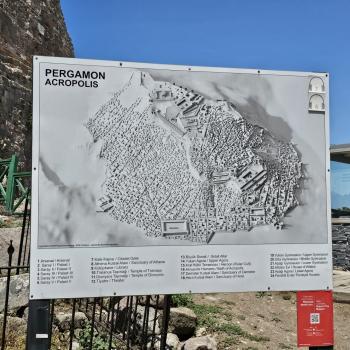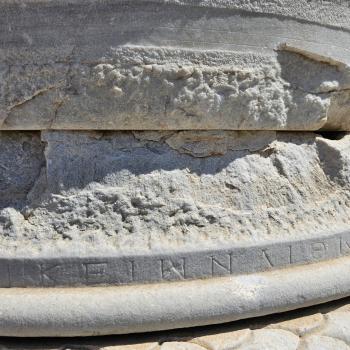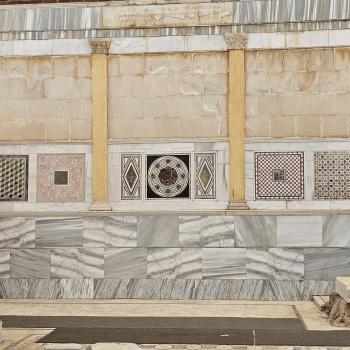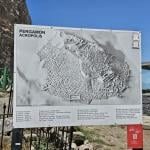Izmir is a beautiful seaside city of three million. There is however not much to see here in terms of the seven churches of Revelation. So we moved on to Pergamon, where there is a ton to see both on the Acropolis and in the Asklepion complex below. It will take a couple of blog posts to work through the Pergamon material.
The modern name of the city is Bergama, and it was a much more important place in antiquity than it is today. It was a much bigger city as well. It takes a couple of hours to get their from Izmir, so we stopped for some cool refreshing fresh squeezed…. pomegranate juice…


Sadly we saw a picture reflecting the amount of concern in Turkey after the mining disaster which was apparently caused in part by slipshod practices. This took place not far from Pergamon back in the late spring.

Sparing no expense, we hired a Roman to guide our group through this impressive site.
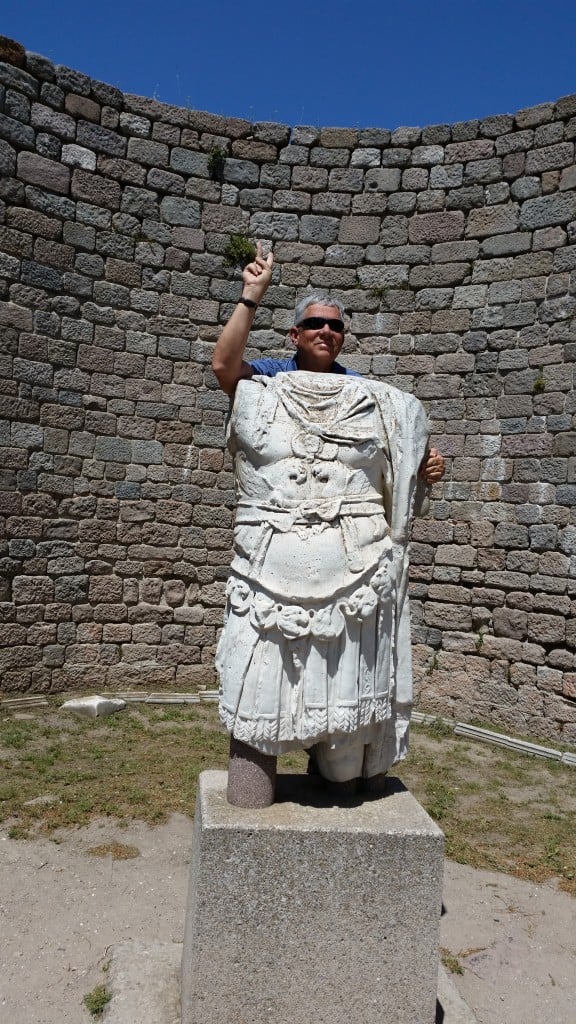
Pergamon was a major educational and health center. It’s library was perhaps the third greatest library in the ancient world, and its temple of Asklepion health complex was famous. It is not a surprise that a famous physician like Galen would come from this town. On top of all that, it was also the place where ‘parchment’ (scraped goat skin) was invented as an alternative to papyrus, an alternative which was much more durable than papyrus. Here is some small examples of ‘parchment’
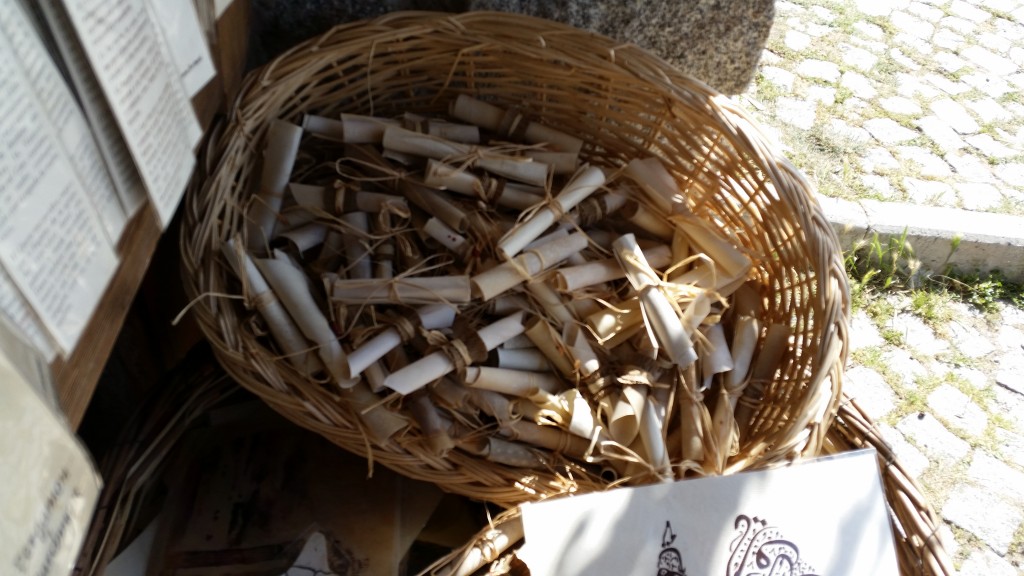
While the modern ruins are very impressive, the ancient city must have been much more so, especially its ultra-high acropolis and all the buildings on top of it.
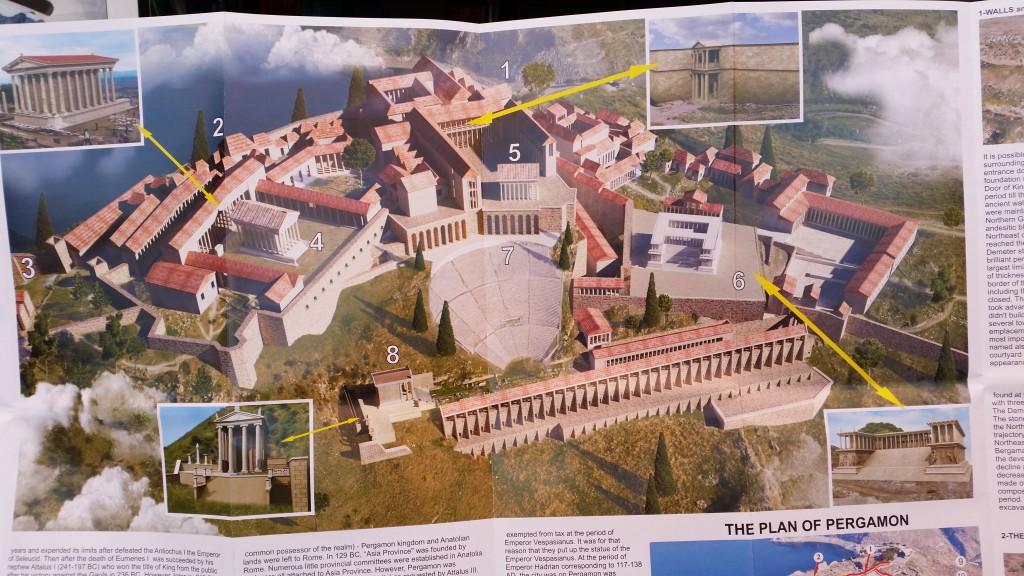
One of the reasons Pergamon doesn’t appear as impressive today as it might is because the Germans were allowed to cart off the great altar of Zeus from the site to a museum in Berlin…. and here it is….
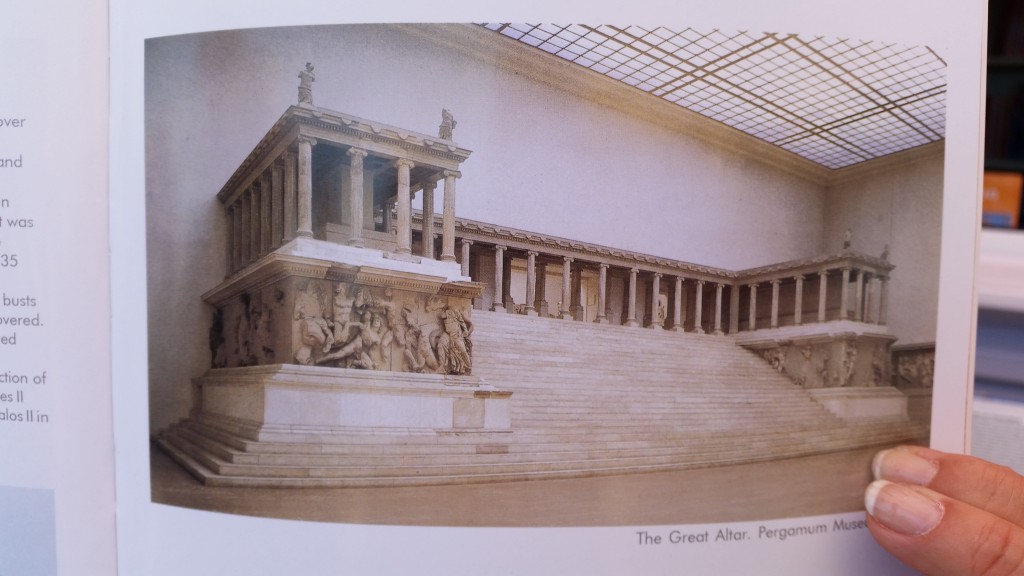
Here’s what that part of the site looks like today….
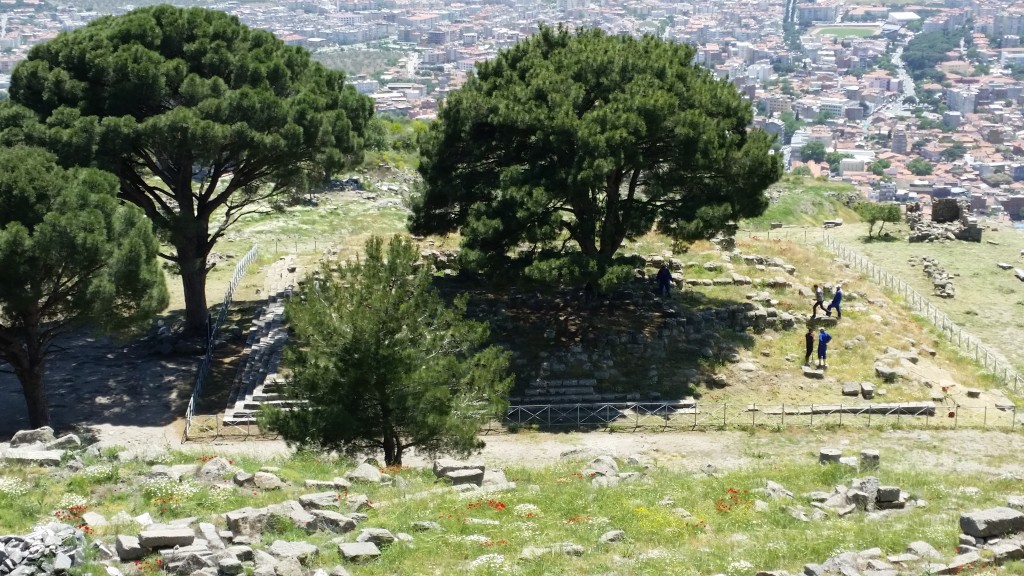
This acropolis is truly precipitous, and it has the most dangerous theater carved into the side of a hill I’ve ever seen. Check out these two shots.
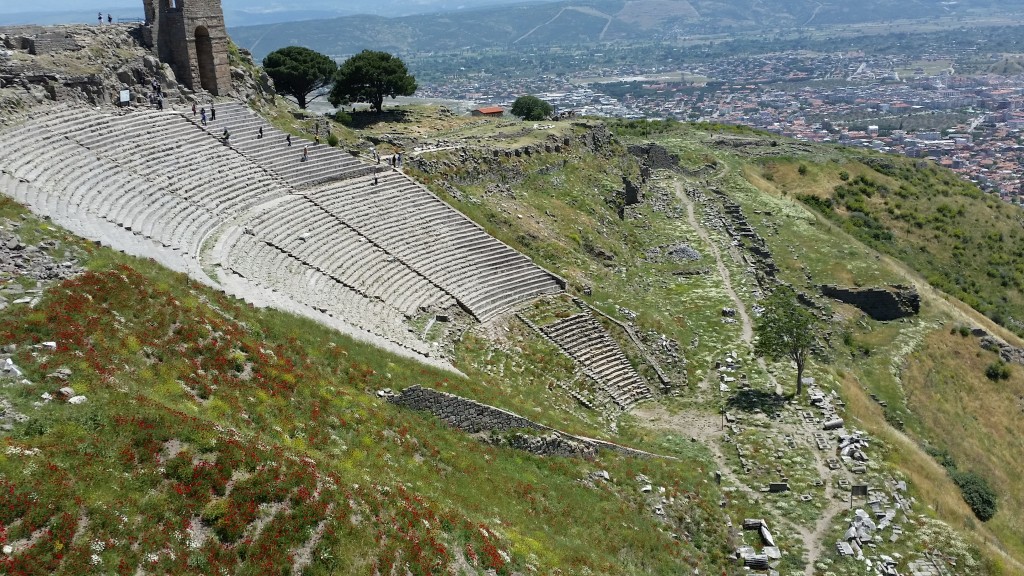
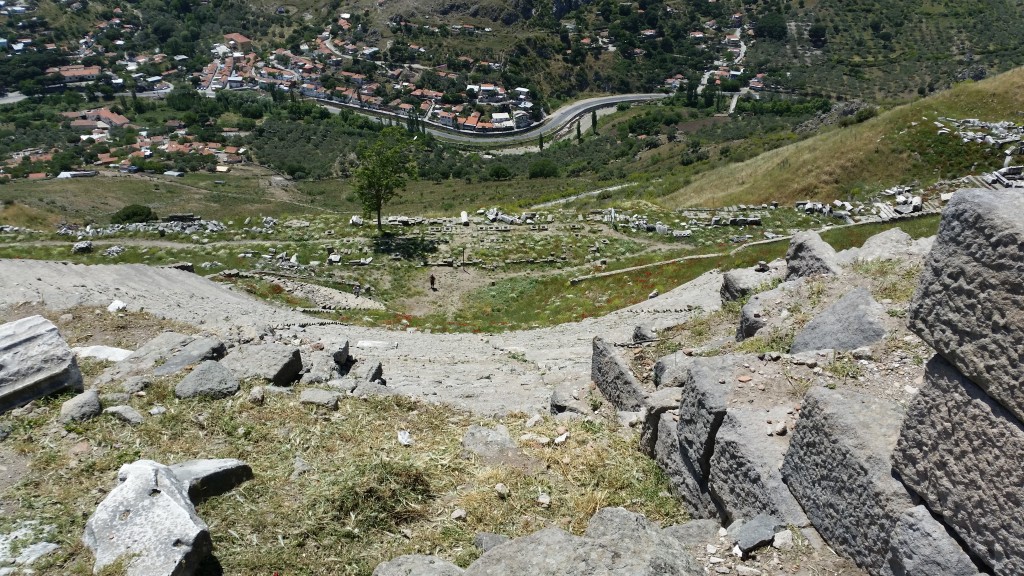
It’s a beautiful time of the year to go to a site like this….
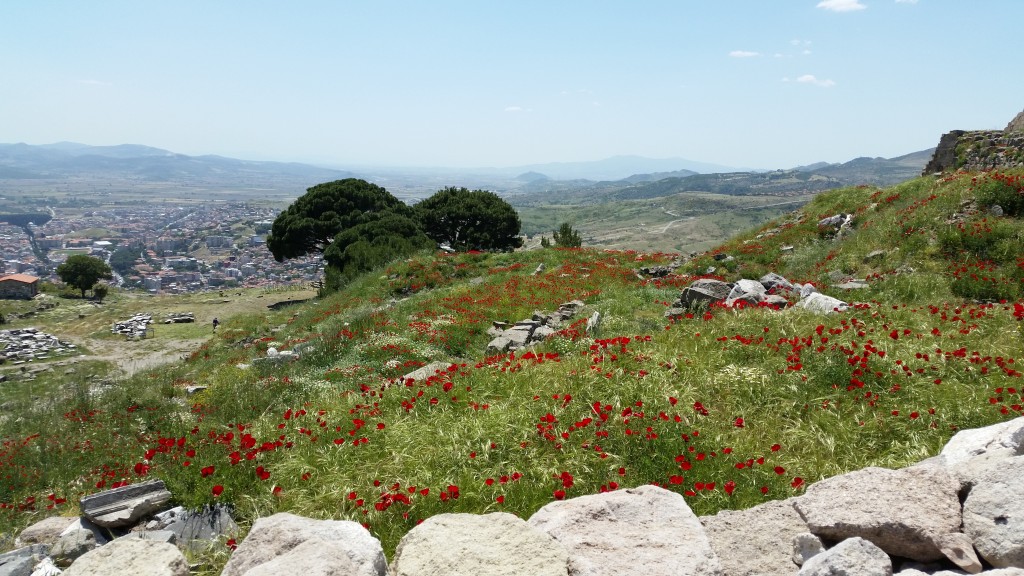
There were many temples at Pergamon, some on the acropolis, some further down the hill, like this one.
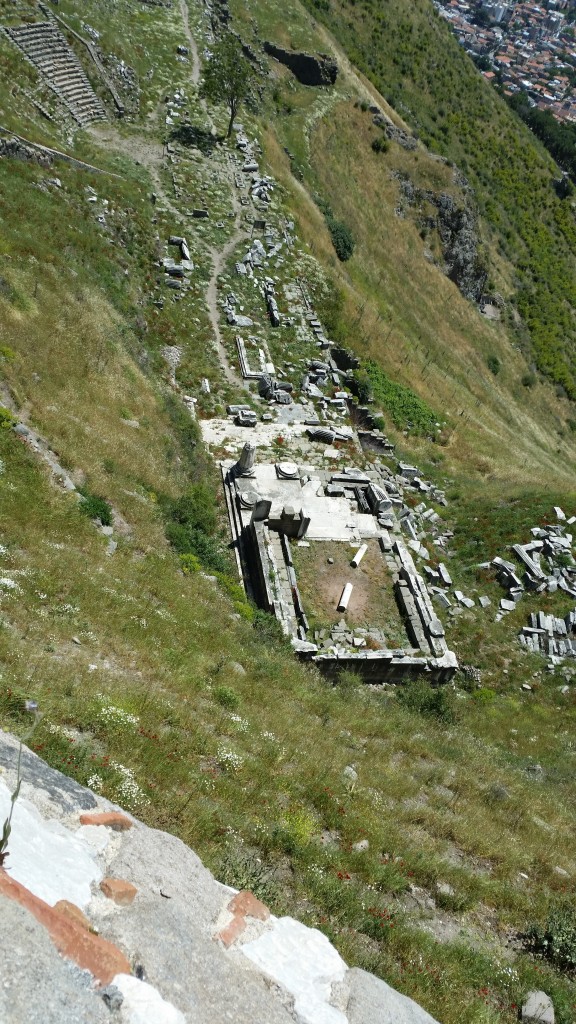 In regard to which temple and which Satan’s throne is in view in Rev. 2, it is likely to be the altar from the temple of Zeus, and not the imperial cult temple of Trajan built after the time when Rev. 2 was likely written.
In regard to which temple and which Satan’s throne is in view in Rev. 2, it is likely to be the altar from the temple of Zeus, and not the imperial cult temple of Trajan built after the time when Rev. 2 was likely written.
Here, near the apex of the acropolis is the locale of at least part of the famous ancient library.
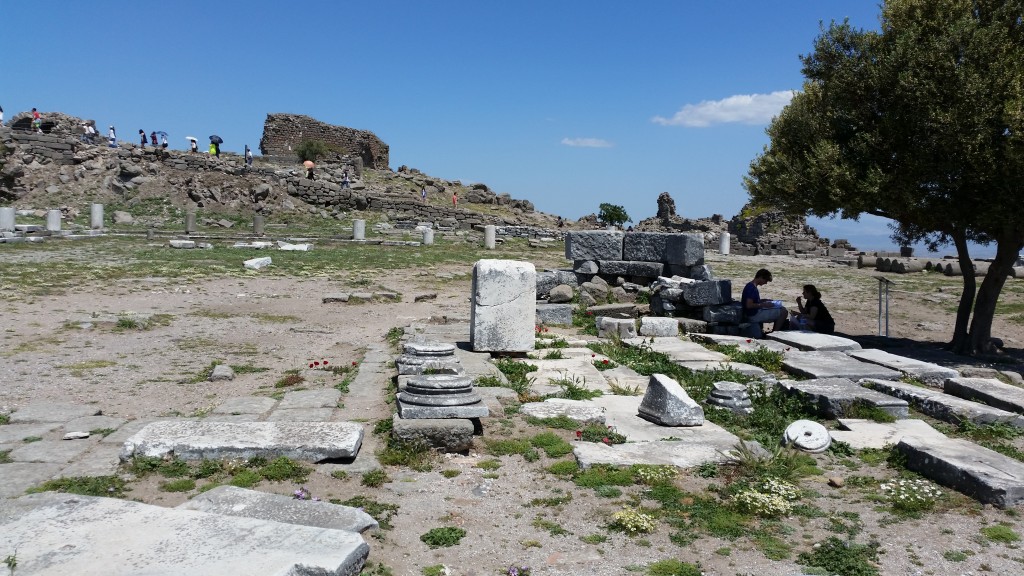
The remains of the Trajan temple are however impressive.
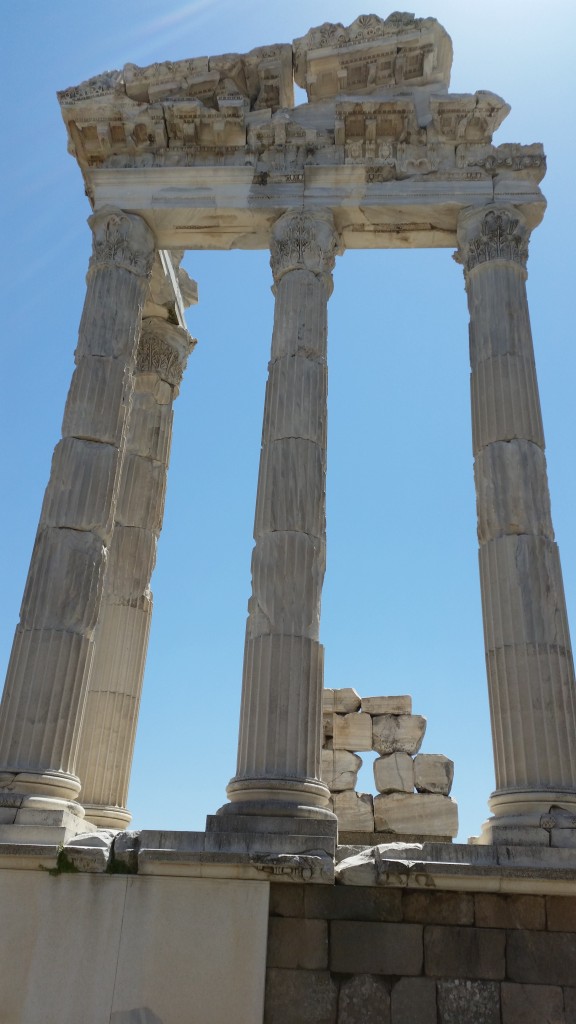
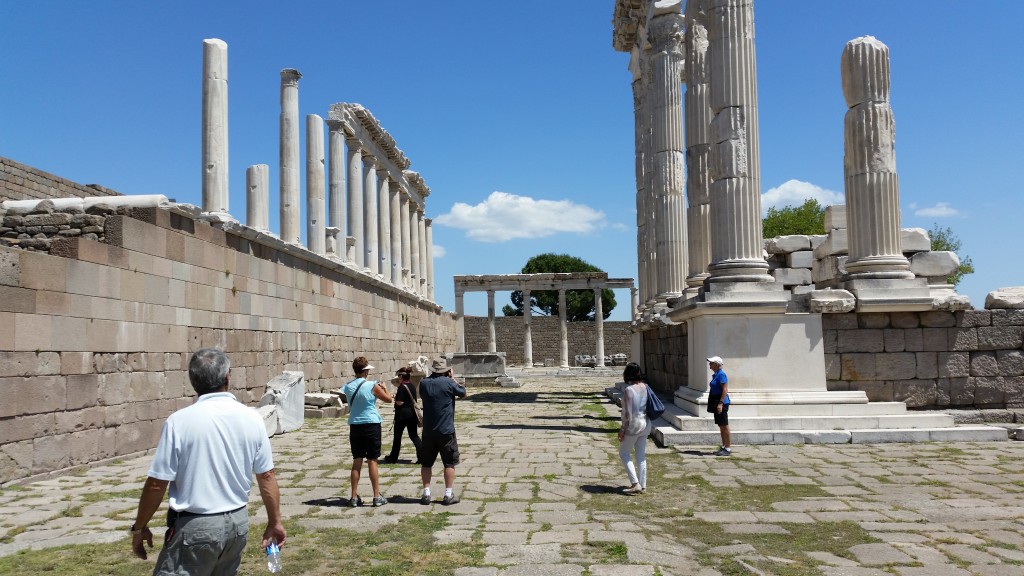
As with many other such cities, there was a via sacra, or sacred way from the acropolis to some special temple (e.g. you have this with the temple of Artemis at Ephesus), in this case the Asklepion. Here is a shot looking back down the via sacra to the acropolis where one can see the ancient theater and the temple of Trajan as well.
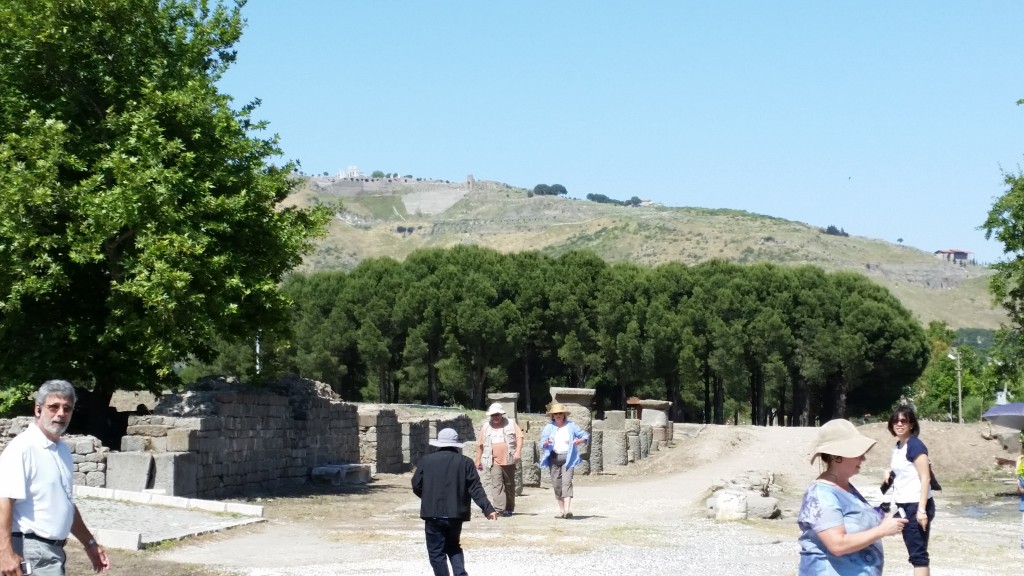
We will go to the place of healing in the next post.


